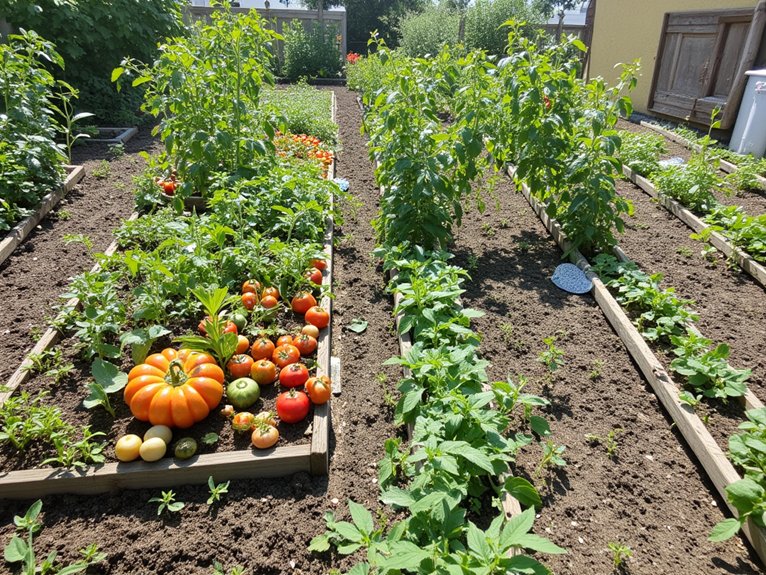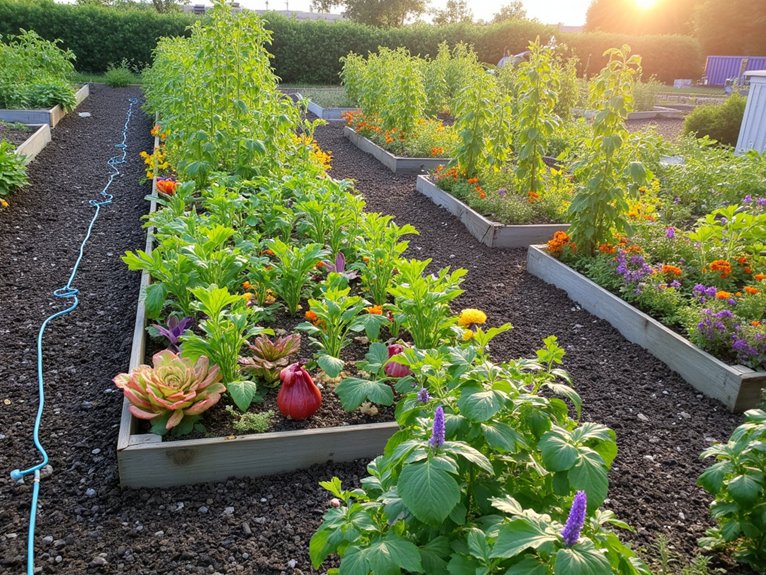Like planting a seed that blossoms into nature’s bounty, your organic gardening journey starts with a single step. You’ll master the essentials of chemical-free growing through proven techniques that expert gardener Maria Chen describes as “working with nature, not against it.” From selecting the right location to harvesting your first crop, you’re about to discover why 78% of home gardeners are switching to organic methods – and how you can join their success.
Contents
Why Your Garden Needs to Go Organic

While making the switch to organic gardening might seem intimidating at first, the benefits far outweigh any initial challenges you’ll face. By embracing organic methods, you’ll create healthier soil through composting and produce nutrient-rich vegetables free from harmful chemicals.
Natural pest control methods protect beneficial insects and create a balanced ecosystem in your garden. “When you garden organically, you’re working with nature rather than against it,” explains master gardener Sarah Chen. You’ll also reduce your environmental impact while saving money on expensive synthetic fertilizers and pesticides. Your family will enjoy fresh, chemical-free produce straight from your backyard.
Essential Tools and Materials for Success
Every successful organic garden starts with a core set of essential tools and materials that’ll make your work efficient and enjoyable. You’ll need quality hand tools including a spade, garden fork, hand trowel, and pruning shears for basic maintenance tasks.
“Having the right soil amendments on hand is vital,” says Master Gardener Sarah Chen. “Stock up on compost, organic fertilizers, and mulch.” Don’t forget your pest identification guide and magnifying glass to spot issues early.
Essential supplies also include:
- Garden gloves
- Watering can
- Wheelbarrow
- Plant markers
- Garden twine
Planning Your First Garden Layout

Three key factors will shape your initial garden layout: available space, sunlight patterns, and accessibility for maintenance. “Start by sketching your garden space on graph paper, with each square representing one foot,” recommends landscape designer Mark Thompson.
Consider your garden dimensions carefully when planning rows or beds. You’ll need:
- 12-18 inches between most vegetable plants
- 24-36 inches between rows for easy access
- 3-4 foot wide beds maximum for comfortable reach
Map out areas that receive 6+ hours of direct sunlight – these spots are ideal for vegetables. Leave paths wide enough for wheelbarrows and kneeling space during maintenance.
From Seed to Harvest: Getting Started
Once you’ve mapped out your garden layout, starting seeds indoors gives you a head start on the growing season. “Beginning seeds indoors lets you control growing conditions and extends your harvest window by 4-6 weeks,” explains master gardener Sarah Chen.
Your seed selection should focus on organic varieties suited to your growing zone. Fill seed trays with organic potting mix, plant seeds at proper depth (usually 2-3 times their width), and maintain consistent moisture. Place trays in a warm spot with bright, indirect light.
Water gently from below and transplant seedlings outdoors once they’ve developed 2-3 sets of true leaves.
Maintaining a Thriving Organic Garden

After your seedlings take root in their outdoor home, maintaining a healthy organic garden becomes your daily mission. “Regular garden maintenance creates a strong foundation for plant health and abundant harvests,” notes organic farmer Maria Rodriguez.
Focus on these key maintenance tasks:
- Monitor soil health by adding compost monthly
- Water deeply but infrequently to encourage strong roots
- Remove weeds as soon as they appear
- Check for pests during morning garden walks
For natural pest management:
- Introduce beneficial insects like ladybugs
- Plant companion flowers to deter harmful bugs
- Use organic neem oil spray when needed
